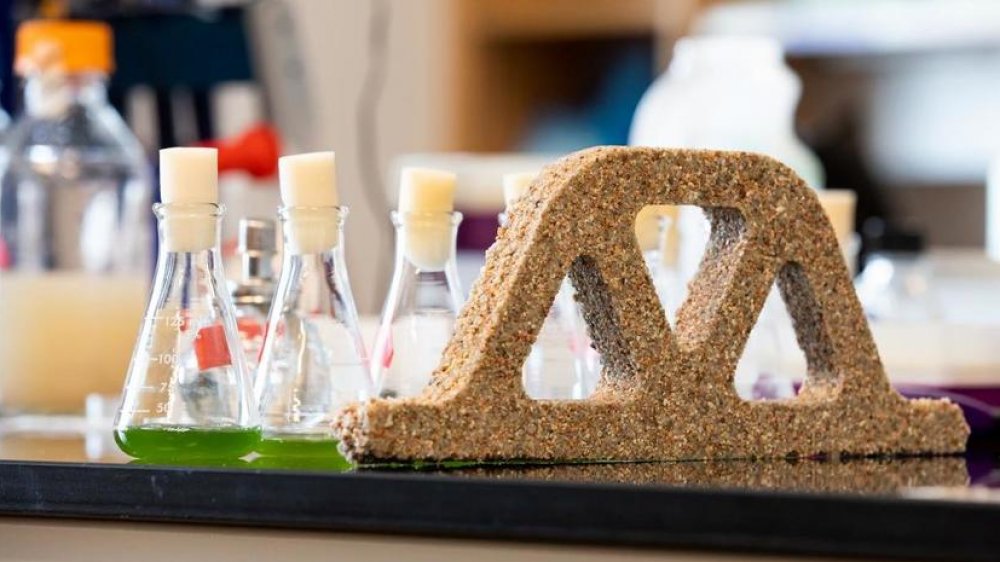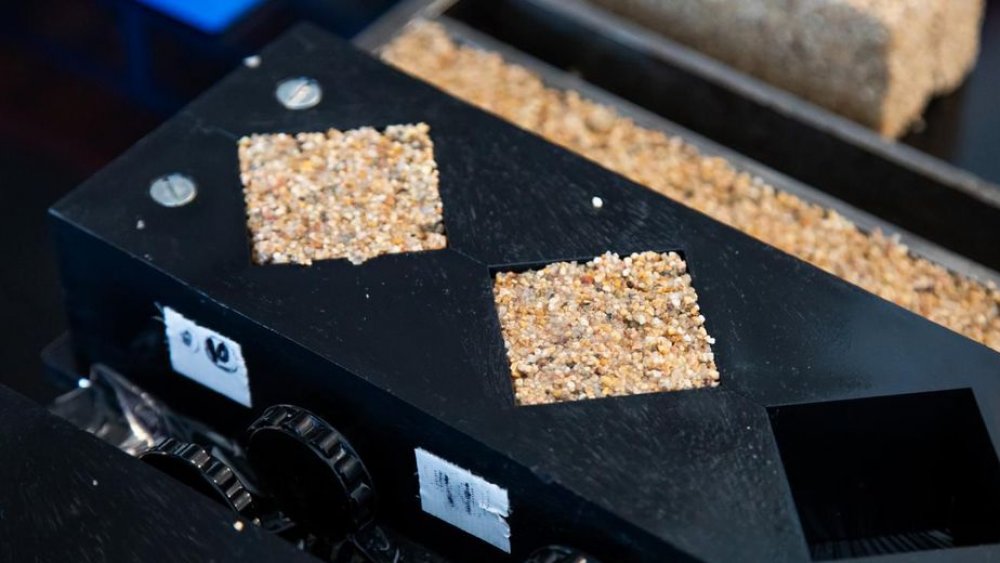Researchers Created Self-Replicating Concrete From Bacteria And Sand
Concrete has existed in some form or other since civilization was knee-high to a Roman colosseum. As History details, in ancient Rome, concrete consisted of volcanic ash and lime. In the millennia that followed, humanity has largely failed to improve on volcanic concrete. In fact, the predominant modern version is worse. Known as Portland cement, modern concrete combines clay and limestone to create a brittle building material that lacks staying power. It doesn't hold up well in seawater and has "a service life of less than 50 years." Via ScienceDirect, Portland cement is so prone to cracking that fibers have to be added to bolster its durability.
Modern concrete also sucks at being green, and not just because of its gray color. Professor of civil and environmental engineering Paulo Monteiro told History that Portland cement "accounts for 7 percent of the carbon dioxide that industry puts into the air." And it's a pretty prevalent construction material, with 19 billion tons being used each year. Gosh, wouldn't it be nifty if modern people created better concrete without having to rip off the ancient Romans? A group of Colorado researchers seem to think so. In fact, they created concrete so green that it's actually alive.
The life of building blocks
It sounds like a germaphobe's nightmare: an object that's not just crawling with bacteria but literally made of the stuff. As detailed by Chemeurope.com, at team of researchers from the Living Materials Laboratory at the University of Colorado Boulder created "living concrete" by allowing photosynthetic cyanobacteria to grow on a scaffolding of hydrogel and sand. The process resembles the formation of seashells, with moisture fostering bacterial growth and mineralization. Bacterial concrete not only has the potential to be a sustainable building material; it helps build itself. If you cut a living brick in half, the bacteria will grow into two whole bricks with the addition of hydrogel. Perhaps best of all, since this concrete partly derives from sand, if you used it to build a house, your home would be your sandcastle.

